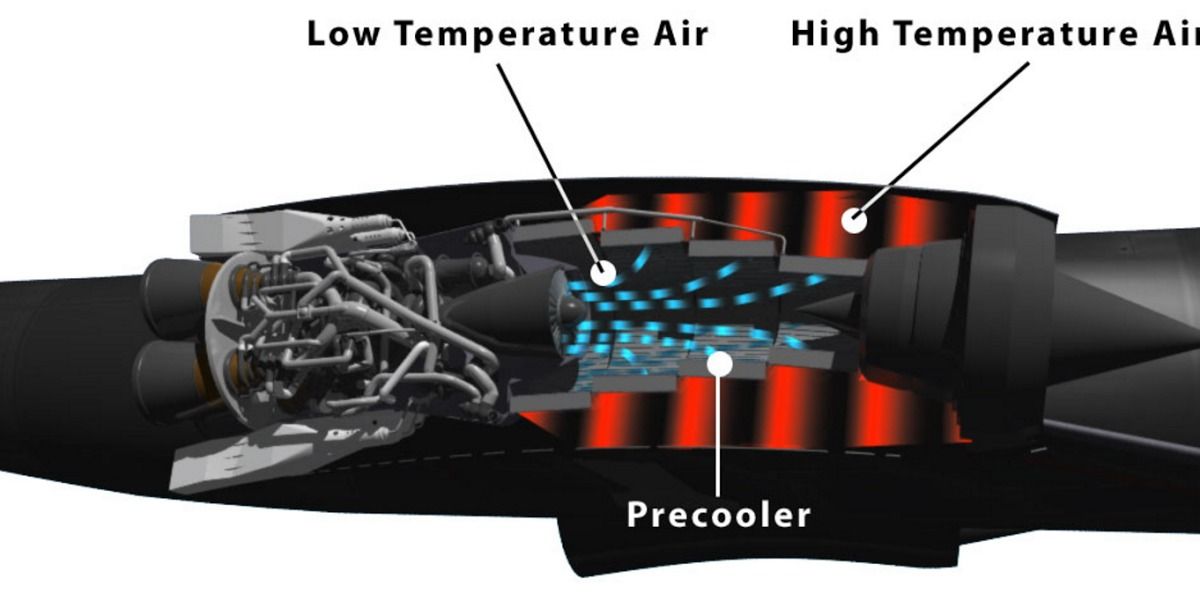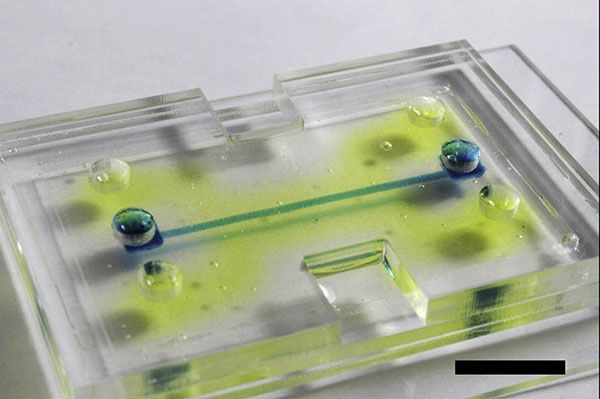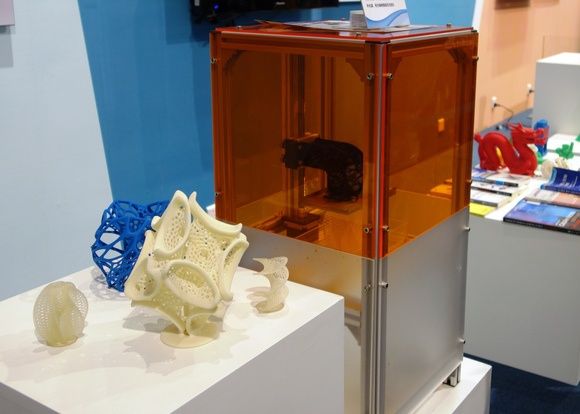Page 11058
Jul 13, 2016
17 Ways Technology Will Change Our Lives by 2050
Posted by Klaus Baldauf in categories: mobile phones, space
Goodbye smartphones, hello space tourism. Here are 17 bold predictions about the future from a futurist with an 85% accuracy track record.
Jul 13, 2016
Reaction Engines secures €10 million funding to enable development of SABRE demonstrator engine
Posted by Klaus Baldauf in categories: energy, space, transportation

Reaction Engines Ltd. announces today the signing of a €10m Development Contract with the European Space Agency, finalizing the UK Government’s £60m commitment.
Reaction Engines Ltd., today announces the signing of a €10m European Space Agency (ESA) contract which will enable the development of a ground based demonstrator of SABRE, a new class of aerospace engine which is highly scalable with multiple potential applications in hypersonic travel and space access.
Jul 13, 2016
3/3 Liz Parrish and Avi Roy: Genetic and other innovative therapy against aging
Posted by Montie Adkins in categories: genetics, life extension

Here’s Liz Parrish talking about driving down costs, replacing viral vectors, and having all kinds of trouble with the lid of a bottle.
Liz Parrish, founder or Bioviva company, which developing genetic therapy against aging. He first in world tested such genetic therapy on himself and resulting effect make her cells be like 20 years younger.
Continue reading “3/3 Liz Parrish and Avi Roy: Genetic and other innovative therapy against aging” »
Jul 12, 2016
Why is Bitcoin Capped at 21M units?
Posted by Philip Raymond in categories: bitcoin, cryptocurrencies, economics, government, transparency
I was asked this at Quora.com, where I answer questions under the pen name, ‘Ellery’. But the query deserves a companion question, and so I approached the reply by answering two questions.
You might have asked “Why was Bitcoin designed to have a cap?” But, instead, you asked “Why is the cap set at 21 million bitcoins”. Let’s explore both questions starting with the choice of a circulation cap…
Why set the cap at 21 million BTC?
The choice of a cap number is arbitrary and in fact, it could be 1 or it could be 1 hundred trillion. It makes no difference at all and it has no effect on the economy—even if Bitcoin were to be adopted as a currency all over the world. If it were set to 1 BTC, we would simply discuss nano-BTC instead of 1 BTC for amounts of about $650.
Jul 12, 2016
Should We Blame the U.S. and Israel for Cyber Warfare?
Posted by Karen Hurst in categories: entertainment, military

Blaming the US and israel for cyber warfare?!
Alex Gibney’s new film “Zero Days” charts the terrifying history of cyber warfare, focusing in particular on the attack that the U.S. and Israel allegedly launched against the Natanz nuclear facility in Iran.
Continue reading “Should We Blame the U.S. and Israel for Cyber Warfare?” »
Jul 12, 2016
Berkshire offers cyber cover for architects and engineers
Posted by Karen Hurst in category: cybercrime/malcode
Not shocked by this because I have seen some of these policies in various forms already.
Berkshire Hathaway Specialty Insurance Co. on Tuesday said it has launched a U.S. professional liability policy for architects and engineers that includes cyber coverage.
Professional First Architects & Engineers Professional Liability Insurance’s cyber coverage addresses media, technology and network security and privacy liability exposures, including the cost of responding to a data breach or network extortion threat, BHSI said in a statement.
Continue reading “Berkshire offers cyber cover for architects and engineers” »
Jul 12, 2016
Sharper than living matter permits
Posted by Karen Hurst in categories: biological, quantum physics
Researchers at the Max Planck Institute of Molecular Physiology in Dortmund have now found a way to pinpoint the positions of individual molecules while at the same time measuring their activity and interactions in the same living cell. A dedicated cooling protocol on a microscope allows to pause cellular life at subzero temperatures, to let it continue to live again after warming. From the series of individual snapshots obtained, the researchers are able to form a precise spatial-temporal picture of the activity patterns of individual molecules within individual cells.
Fluorescence microscopy allows seeing where biological molecules are in cells. However, what Werner Heisenberg formulated for quantum physics to a certain extent has its analogy in biology: In the living state one can observe the collective movement of molecules in cells, which makes it however difficult to determine their exact positions. Paradoxically, the molecular dynamics that sustain life have to be halted to record the position of molecules using high-resolution fluorescence microscopy.
Living matter maintains its structure by energy consumption, which results in dynamic molecular patterns in cells that are difficult to observe by fluorescence microscopy, because the molecules are too numerous and their movements too fast. To tackle this problem a choice needs to be made: to precisely record the position of the molecules in a ‘dead’ state or to follow their collective behaviour in the living state. Although researchers have been able to stop movements in cells by chemical fixation, such methods lead to irreversible cell death and the acquired images of molecular patterns are not representative of a living system.
Jul 12, 2016
Microfluidic Chips Made of Silk Replicate Human Tissues for Drug Testing, Implantable Applications
Posted by Karen Hurst in categories: bioengineering, biotech/medical, computing
At the National Institute of Biomedical Imaging and Bioengineering (NIBIB) and Tufts University a team has developed a microfluidic chip that mimics human tissue for use in drug testing applications. The chip is based on a silk gel that overcomes the limitations of polydimethylsiloxane (PDMS), a silicon material widely used to host living cells within microfluidic devices. As an example, PDMS has problems handling lipids, absorbing them instead of letting them move freely along with other nearby compounds and so not applicable with lipid-based compounds. Additionally, PDMS is not biodegradable and so a small device based on it can’t easily be used as an implantable. Silk, on the other hand, just needed a bit of engineering to make a candidate that overcomes many of PDMS’s limitations.
Jul 12, 2016
Hacked 3D printers could commit industrial sabotage
Posted by Karen Hurst in categories: 3D printing, food, transportation
3D printers can churn out toys, clothing and even food. But the technology also shows potential for use in industrial sabotage, researchers warn.
Imagine a car maker using 3D printers to manufacture components, only to have the parts contain defects that are undetectable until it’s too late.
A hacker with access to the 3D printers could make that happen, a team of researchers wrote in a recent paper. This could result in a “devastating impact” for users and lead to product recalls and lawsuits, said New York University professor Nikhil Gupta, the lead author of the paper.
Continue reading “Hacked 3D printers could commit industrial sabotage” »












